The Montana Draw
Montana may well be the epicenter for western outdoor businesses. From mapping and gear companies, to the well known Meateater brand, it seems like the who’s who of western hunting and gear call Montana home. So it shouldn’t be a surprise that Montana has a smorgasbord of hunting opportunities. However, like much of western wildlife management, many of those opportunities require the prospective hunter to draw a tag or permit. So understanding how the Montana elk draw works or Montana deer draw works is the first step to chasing after critters in the land of gold and silver. It should come as no surprise that the good folks at HuntScore love making the complex easy. So here is what you need to know when it comes to understanding how the Montana draw works.
Resident vs. NonResident
Montana, like most states, has different rules for residents and nonresidents. Residents are afforded the most opportunity. Montana limits nonresidents to no more than 10% of available tags in a hunting district or unit. We highlight no more than because if 10 resident tags are available, this would normally imply that 1 nonresident tag could be awarded. However, if only 7 residents apply, there is a chance the 1 nonresident tag will not be awarded since this would exceed the 10% cap. The 10% cap will only be met if there is sufficient resident interest to warrant awarding the 10% cap. So keep that in mind. There are some restricted opportunities for over-the-counter nonresident licenses and opportunities for leftover licenses. Residents have a significant number of OTC opportunities for many species, including deer and elk. Where permits are limited, a bonus point draw system is in place. We’ll break that down next but below is a high level overview of license and permit opportunities by species.
| Species | Resident | NonResident |
|---|---|---|
| Antelope | Bonus Point | Bonus Point |
| Deer | OTC & Bonus Point | OTC* & Bonus Point & Preference Point |
| Elk | OTC & Bonus Point | OTC* & Bonus Point & Preference Point |
| Bear | OTC | OTC |
| Moose | Bonus Point | Bonus Point |
| Mountain Goat | Bonus Point | Bonus Point |
| Bighorn Sheep | OTC & Bonus Point | OTC & Bonus Point |
| Bison | Random Draw | Random Draw |
| Wolf | OTC | OTC |
| Mountain Lion | OTC & Bonus Point | OTC & Bonus Point |
Bonus Points
Montana Fish Wildlife and Parks bonus point system awards applicants who apply for multiple years but are not drawn. Each year an applicant applies but is not drawn, they can earn a bonus point. If an applicant wishes to build points and not apply for a tag in a particular year, you can simply purchase a bonus point later in the summer.
Bonus points only apply to the first choice draw round. After the first draw, any leftover licenses or permits are awarded randomly in subsequent rounds. Bonus points benefit an applicant because they are squared and then each point represents another chance of drawing. An applicant with 2 bonus points will have her or his hat put in the bin 5 times (4 for their bonus points + 1 entry for the current year) , while someone with 10 bonus points gets entered 101 times! This system still gives every applicant a chance to draw but applicants with significant points have a much higher chance of drawing. Below is a concrete simulation showing how these points help.
Draw Odds By Bonus Points Across Iterations For Permit 339-20-A
Above we use data from the 2020 draw for elk permit 339-20-A. For each iteration, we look at the cumulative probability of an individual with a given number of bonus points being drawn. Typically after ~50 iterations a steady state is reached but HuntScore performs 400 iterations just to be sure. If you highlight or select 15 bonus points, you'll notice how odds settle around roughly 60% after enough draws are simulated. Compare that with someone who has 1 bonus point and only a 0.3% chance of being drawn.
At HuntScore, we simulate the draw to generate draw odds (or probabilities really) . The important thing to keep in mind is that the real draw happens only ONE time. Because of this, it is true that any combination can occur. That said, some combinations are much more likely than others. So our simulations show what the most likely probabilities are. One thing to keep in mind is that the composition of applicants can change from year to year
The number of applicants applying for a particular permit or license and their bonus points will influence an individual hunters likelihood of drawing. So these simulations are accurate in a steady state where large changes do not happen from year to year. Be sure to review quota, 1st choice applicant demand and bonus point demand to see if any changes happened recently.
Nonresident Deer and Elk Combination Licenses
For nonresidents wanting to hunt deer or elk in Montana, there is an additional barrier to getting a hunt permit. Nonresidents must first successfully draw a deer, elk or deer & elk combination license to be eligible to apply for a specific hunt permit. Note that nonresidents who are successful in drawing a combination license are eligible to hunt any unit with a general season but need to apply for permit only hunting district hunts.
Nonresident combination licenses use a preference point system. In the preference point system, applicants can build up preference points each year to increase their likelihood of being drawn. It is different from the bonus point system in that individuals with the highest points are guaranteed to be drawn first. 75% of licenses go to hunters with the highest number of preference points. The remaining 25% are randomly selected.
While combination licenses are drawn through a preference point system, specific hunting district permits for deer and elk are still drawn through a bonus point system. So nonresidents wanting the best opportunity need to build both points. Successfully drawing a general combination license just allows a nonresident to be eligible to apply for a permit hunt. So if a nonresident wanted to do an elk hunt in hunting district 410 in the Missouri Breaks, they would first need to draw an elk or elk/deer combination license and then draw a permit 410-20 or 410-21.
Choices
When applying, you’ll also be presented with the ability to select up to 3 permits you’d like to apply for. If an applicant is successful in drawing their 1st choice, his or her bonus points will be used. So 1st choice units should only be those an applicant is willing to burn their points on. Also, bonus points are only used in the 1st choice drawing. 2nd and 3rd choice drawings are random, meaning every applicant has the same odds of drawing. Obviously the most in-demand units will issue all available licenses in the 1st choice drawing.
“B” Licenses for Antelope, Deer and Elk
B licenses are often, though not exclusively limited to the taking of does or cow elk. Deer B licenses also typically allow the take of either sex whitetail deer. Some B licenses also allow the hunter to hunt in multiple units. So be sure to read the requirements. Antelope “B” licenses are valid for nonresidents only and are exclusively for harvesting does or fawns.
A Resident Example
Actual examples are always the best. So let's walk through Sophia’s odds of drawing an antelope hunt in hunting district 320 in the Tobacco Roots mountain range. Sophia has 2 bonus points going into the draw, so she’ll receive 4 entries for here squared base bonus points plus 1 entry for here 2021 application.
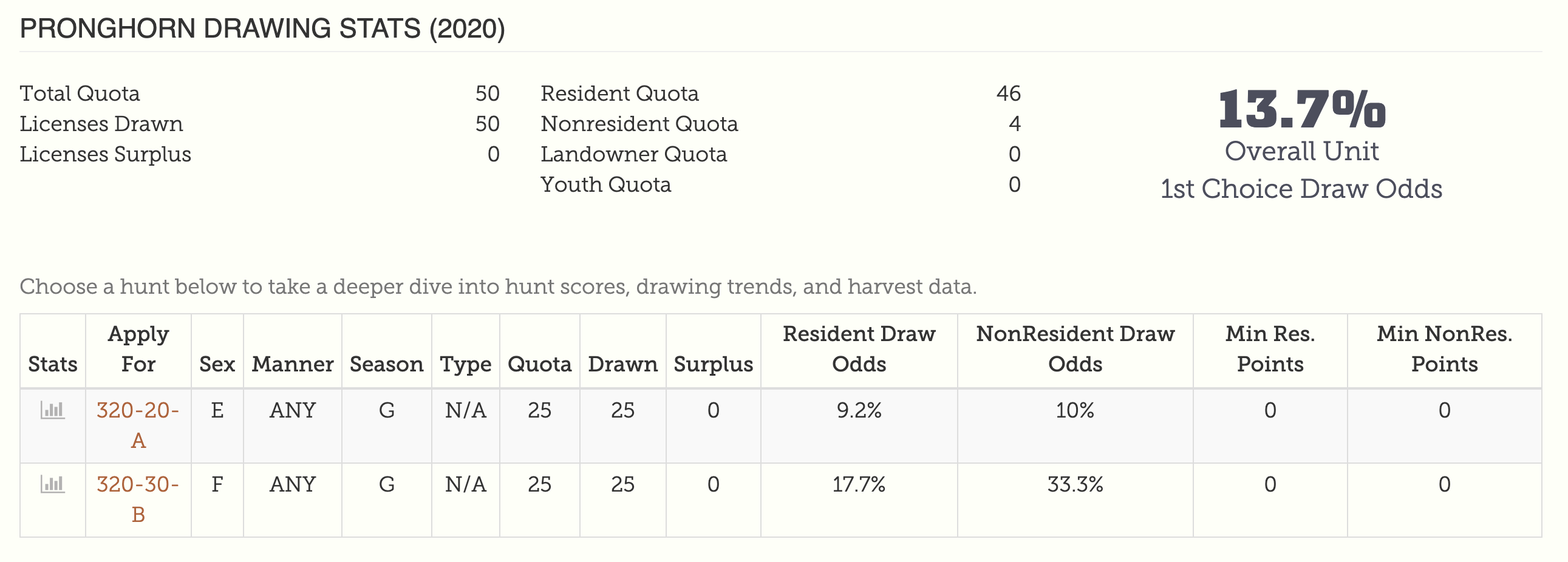
Sophia would like to harvest a good buck so she is applying for license 320-20-A. As a resident, her overall draw odds are 9.2%. However, lets dig deeper and see how her bonus points influence her draw odds. Also, let's check to see if drawing trends have been stable for the unit.
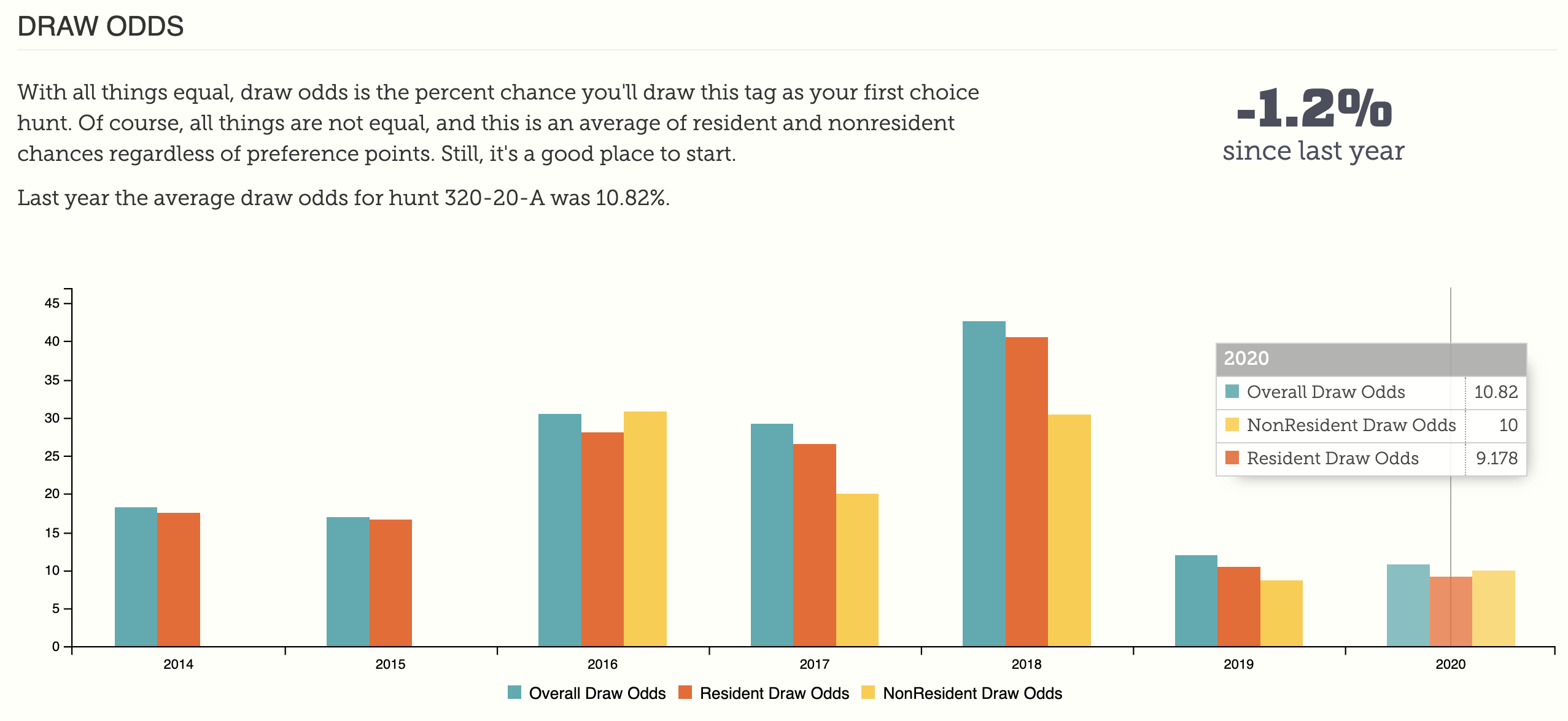
We can see that draw odds have become significantly worse over the last two years. For both residents and nonresidents, odds are roughly half of what they were. This usually means that either the number of applicants increased dramatically year over year or the quota changed.
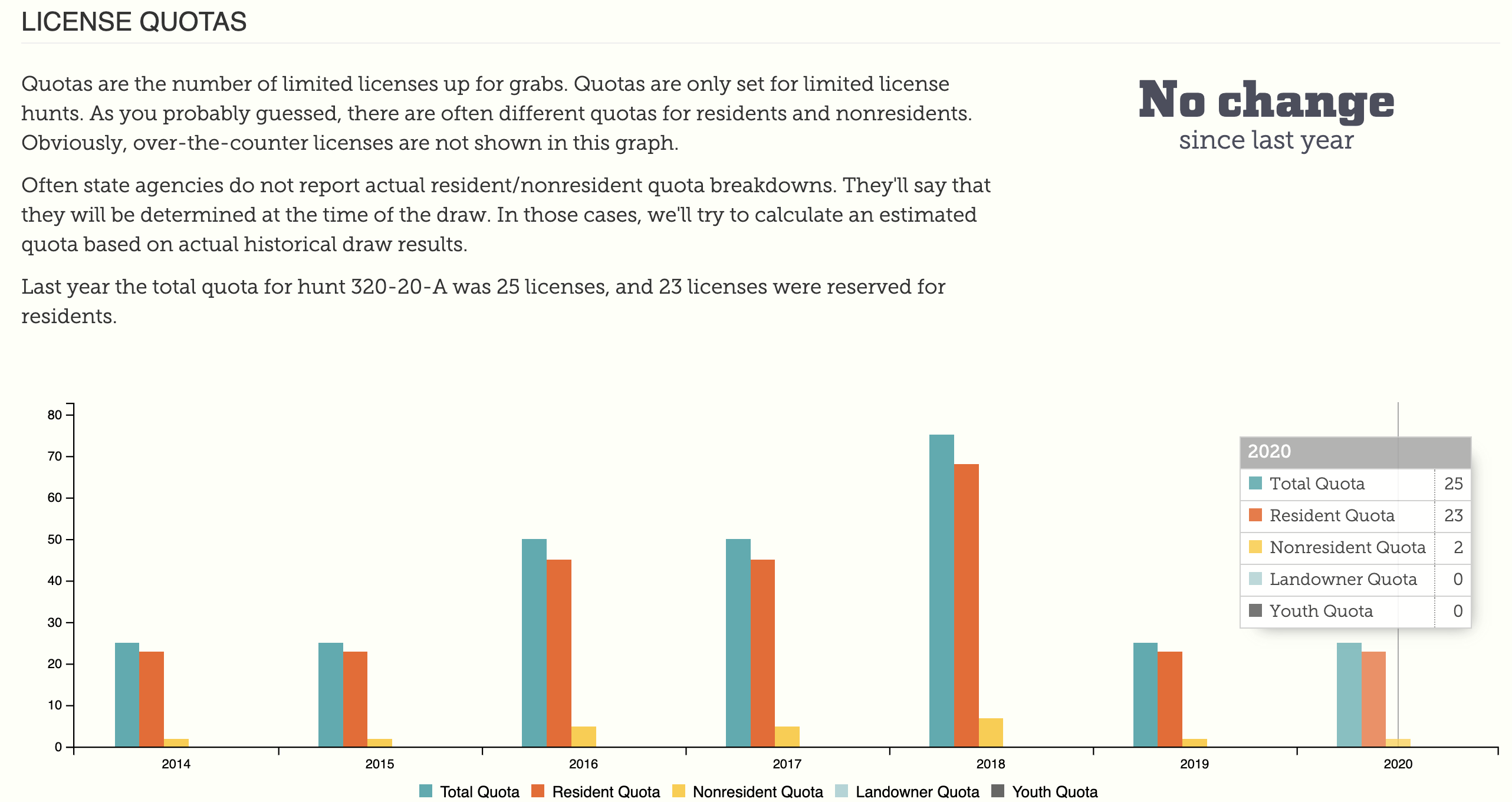
Looking at the license quota, it is clear to see that available licenses are the cause for the decrease in draw odds. Hunter demand has been increasing slightly year over year but the step change in available licenses is the main driver of decreased odds.
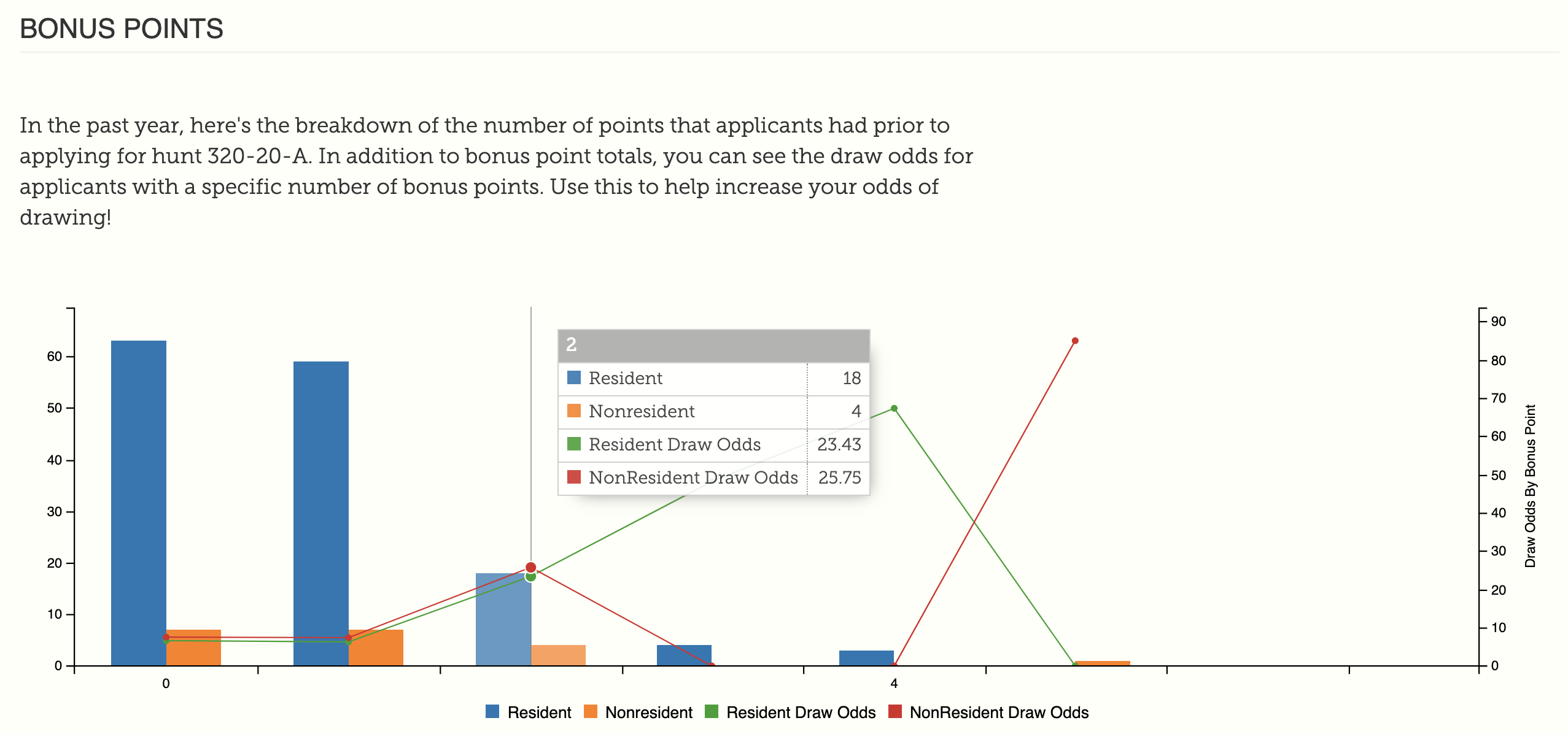
Above are the number of resident and nonresident applicants by bonus point total. HuntScore simulated draw odds by bonus points are plotted as well. Here we can see that having two bonus points increases Sophia’s odds by 14 percentage points, which is huge! She's increased here likelihood of drawing by over 170%!
A NonResident Example
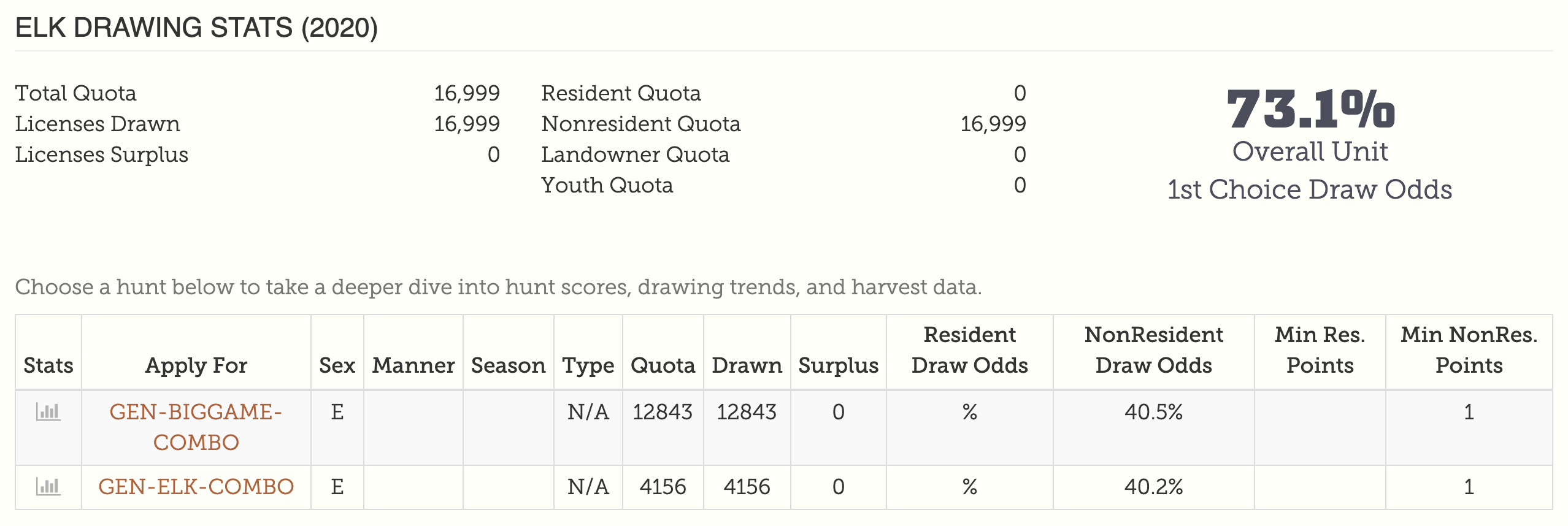
Jeff is looking to hunt elk in Montana and wants to hunt bull elk in unit 339. He has 5 bonus points. He’s also been building up preference points to get a general combination nonresident elk license. He’s been building points since 2018. So he has 2 preference points going into 2020. For Jeff to hunt elk in Montana, he first needs to draw a nonresident combination elk license and then he’ll need to draw a permit for 339.
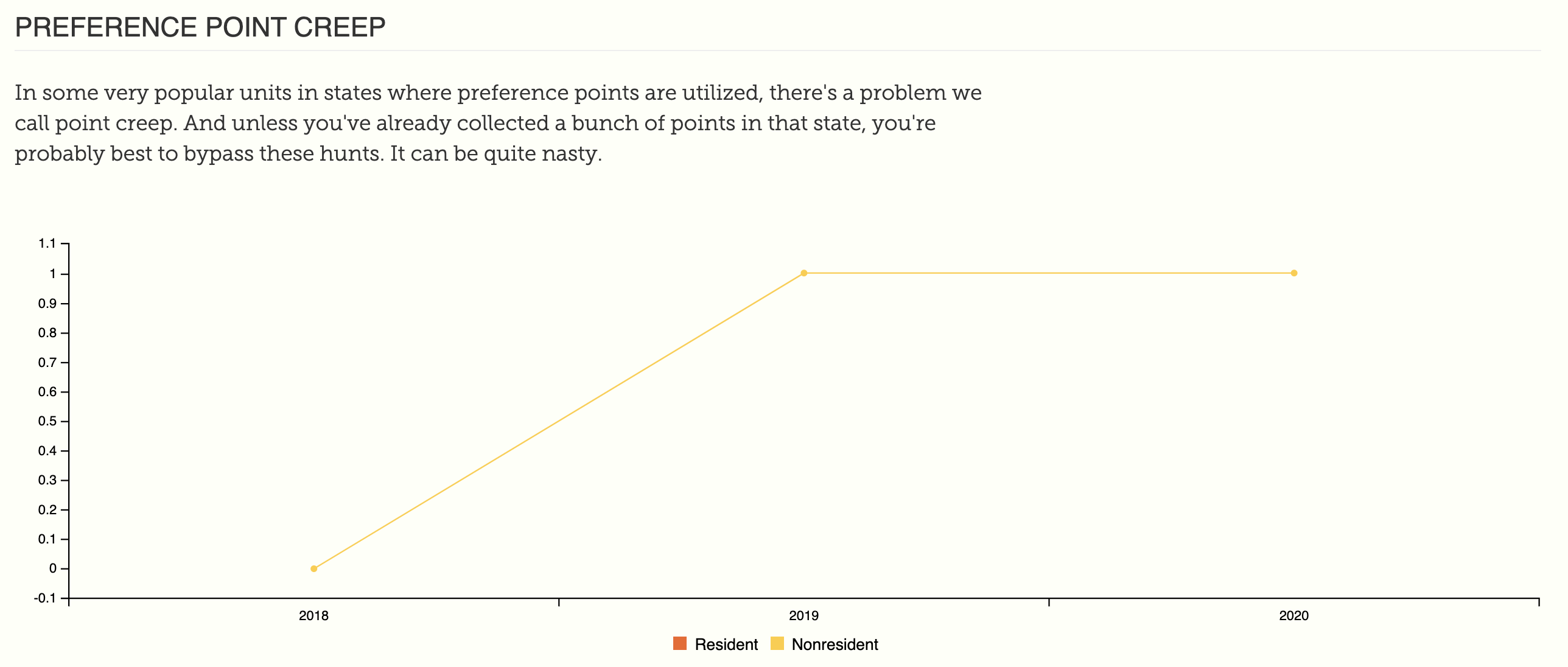
Looking at the General Elk Combo, we can see that the minimum number of nonresident points needed to draw in the preference point round is 1. Since Jeff has 2 he should draw a combination elk license.
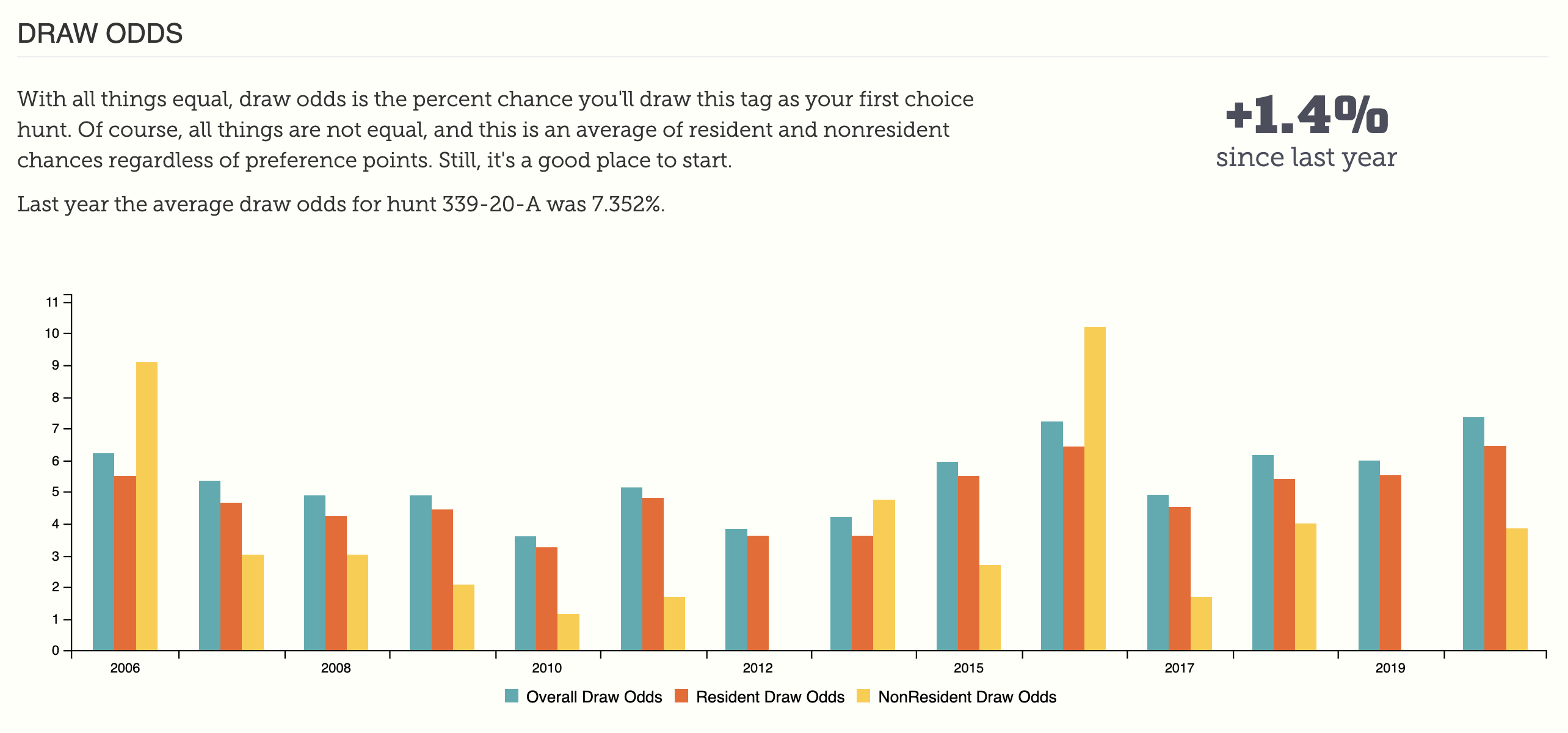
Draw odds for 339-20-A, which would allow Jeff to go after a either a bull or cow elk are about ~4%. We can see only a few times over the last 15 years odds have exceeded 5%. So Jeff was wise to wait a few years before applying. This won't be an easy permit to draw!
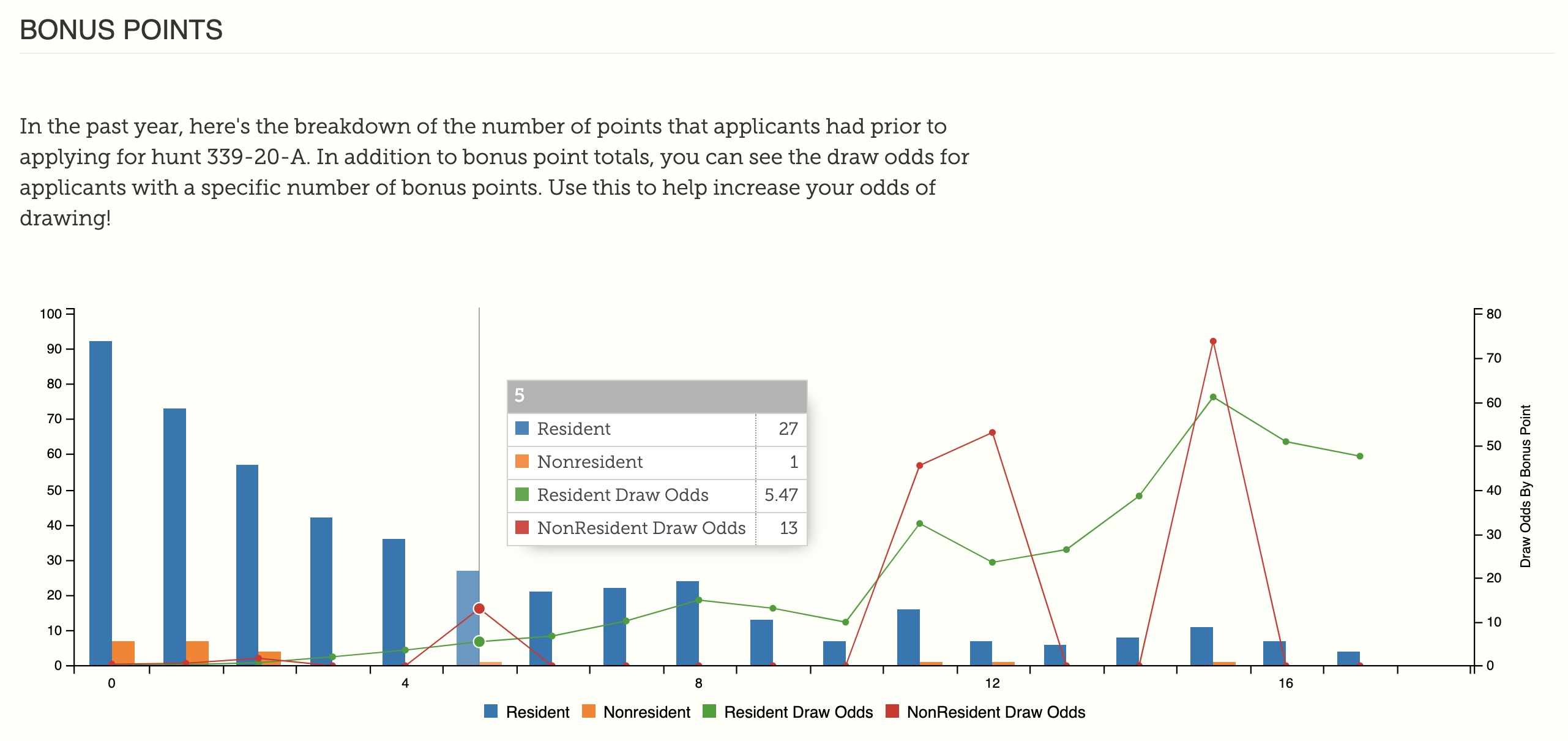
Since Jeff has 5 bonus points, he’ll actually receive 26 entries in the 2021 draw. From the graph above this will increase his odds by 3 times compared to the average nonresident applicant. So while Jeff is stil unlikely to draw he is much better off than the majority of nonresident applicants.
What if Jeff had 8 points? Although not entirely precise, one could get a rough idea of their draw odds by drawing a linear line between the points that do exist. At 8 points Jeff would probably have roughly a 30% chance of drawing instead of a 13% chance.